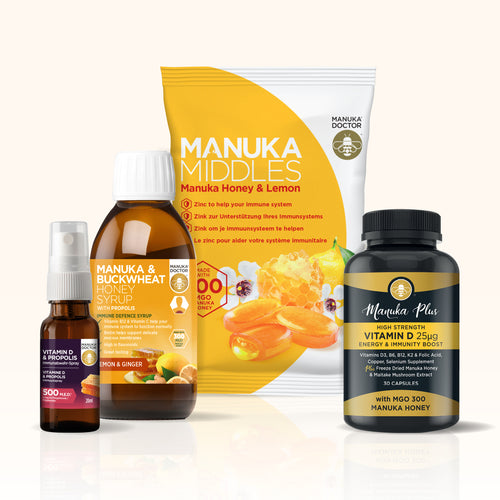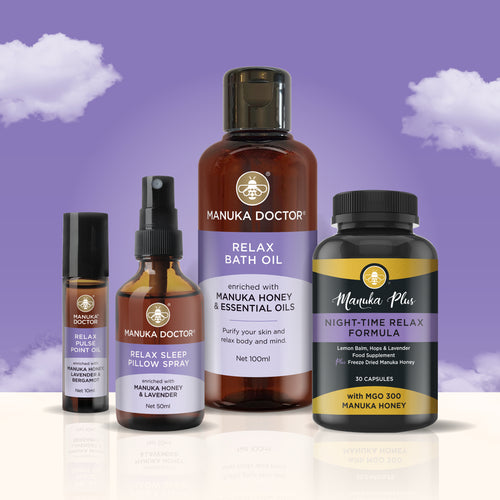Getting stung by a bee is nobody’s idea of fun – especially not if you’re allergic to bee stings – but bee venom has some surprising health benefits, especially for your skin.
Fans include wellness guru Gwyneth Paltrow, Victoria Beckham and Kate Middleton,1 so what’s the big attraction? Discover the buzz (sorry...) behind this novel skincare ingredient.
Bee venom – really?
Yep, exactly that: the liquid ‘poison’ that a bee injects out of its stinger. While the health benefits of other bee products, such as Manuka Honey, are well-researched, we’ve only just scratched the surface of what bee venom can do for our wellbeing.
But don’t worry that you’ll need to be stung by bees to benefit. Although this kind of treatment does exist, known as apitherapy, the bee venom in skincare products is usually collected from bees and then blended with other active ingredients.
Doesn’t that harm the bees?
When a bee normally stings something large, like a mammal (or us), its barbed stinger sticks into the skin and releases venom. The barb cannot be pulled back out, so it’s torn loose and the bee dies as a result. But the bee venom collected for Manuka Doctor skincare is carried out humanely, protecting the bees.

A pane of glass with a light electrical current running through it is placed near the hive. The electronic signal attracts the bees who then sting the glass, leaving venom behind. Thanks to the smooth glass, they don’t lose their barbed stinger – or their lives – and the venom is just collected when it’s dry.
The skin-boosting benefits of bee venom
The idea behind using bee venom in skincare products is that it ‘fools’ the skin into thinking you’ve been stung. In theory, this increases blood flow to the area, bringing fresh oxygen and nutrients, and also stimulates production of collagen and elastin. And now there’s some solid science to back it up.
Bee venom increases collagen production
Bee venom improves skin collagen levels in several different ways. The first is that it inhibits the effect of matrix metalloproteinases (MMPs),2 a group of enzymes produced by sun exposure, stress, smoking and chemicals in the environment, which break down collagen and elastin fibres. So, less MMP action means firmer, younger-looking skin.
Bee venom can also stimulate collagen production. Clinical trials have found that it increases collagen protein synthesis – the process that creates collagen fibres – by encouraging the growth of new skin cells.3 It also speeds up the recovery of damaged skin cells, generating even more skin cells. The combined effects add up to fewer fine lines and less-noticeable wrinkles.4
You can also try our own daily Collagen supplement to support the growth and development of collagen. Collagen Queen contains 200mg responsibly sourced marine collagen as well as Vitamin C and Selenium.
It can soothe acne-prone skin
The active compound in bee venom is called melittin, which has antimicrobial and anti-inflammatory properties. A study by the National Academy of Agriculture, South Korea, discovered that not only could bee venom reduce levels of acne bacteria on the skin, it can tackle the inflammation caused by acne, too.5 Results from another trial reveal that bee venom could reduce angry acne spots in just three weeks.6
How bee venom in skincare can help eczema
Eczema is an inflammatory condition, but bee venom can help here, too. Several studies have found that bee venom can reduce both the number and severity of dry skin patches [lesions] caused by eczema, plus it significantly reduces the itching associated with the condition. An emollient, basically a medical moisturiser, containing bee venom can also reduce levels of inflammation in the skin, which may also limit the number of flare-ups.7,8
It’s good for aching muscles
After exercise, you might experience aching arms or legs, known as delayed onset muscle soreness (DOMS). This is caused by low levels of inflammation as muscle fibres repair themselves. Step forward bee venom; evidence shows that an ointment containing bee venom can relieve muscle pain and (when combined with ultrasound) can help muscles recover much faster too.9,10




